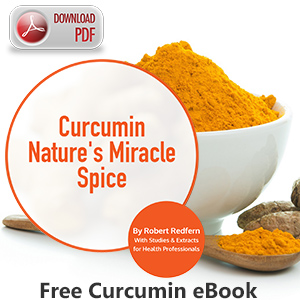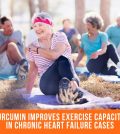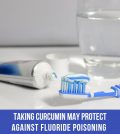The Curry Spice Curcumin
The Curry Spice Curcumin Reduces Oxidative Damage and Amyloid Pathology in an Alzheimer Transgenic Mouse
Giselle P. Lim1, 3, Teresa Chu1, 3, Fusheng Yang1, 3, Walter Beech1, 3, Sally A. Frautschy1, 2, 3, and Greg M. Cole1, 2, 3
Departments of 1 Medicine and 2 Neurology, University of California, Los Angeles, Los Angeles, California 90095, and 3 Greater Los Angeles Veterans Affairs Healthcare System, Geriatric Research, Education and Clinical Center, Sepulveda, California 91343
ABSTRACT
Inflammation in Alzheimer’s disease (AD) patients is characterized by increased cytokines and activated microglia. Epidemiological studies suggest reduced AD risk associates with long-term use of nonsteroidal anti-inflammatory drugs (NSAIDs). Whereas chronic ibuprofen suppressed inflammation and plaque-related pathology in an Alzheimer transgenic APPSw mouse model (Tg2576), excessive use of NSAIDs targeting cyclooxygenase I can cause gastrointestinal, liver, and renal toxicity. One alternative NSAID is curcumin, derived from the curry spice turmeric. Curcumin has an extensive history as a food additive and herbal medicine in India and is also a potent polyphenolic antioxidant. To evaluate whether it could affect Alzheimer-like pathology in the APPSw mice, we tested a low (160 ppm) and a high dose of dietary curcumin (5000 ppm) on inflammation, oxidative damage, and plaque pathology. Low and high doses of curcumin significantly lowered oxidized proteins and interleukin-1, a proinflammatory cytokine elevated in the brains of these mice. With low-dose but not high-dose curcumin treatment, the astrocytic marker GFAP was reduced, and insoluble -amyloid (A), soluble A, and plaque burden were significantly decreased by 43-50%. However, levels of amyloid precursor (APP) in the membrane fraction were not reduced. Microgliosis was also suppressed in neuronal layers but not adjacent to plaques. In view of its efficacy and apparent low toxicity, this Indian spice component shows promise for the prevention of Alzheimer’s disease.
Key words: Alzheimer’s disease; inflammation; oxidative damage; anti-oxidant; microglia; plaque; interleukin-1; Tg2576; APPswedish
1. Chan MM, Fong D, Soprano KJ, Holmes WF, Heverling H. Inhibition of growth and sensiti- zation to cisplatin-mediated killing of ovarian cancer cells by polyphenolic chemopreventive agents. J Cell Physiol. 2003 Jan;194(1):63-70.
2. Navis I, Sriganth P, Premalatha B. Dietary curcumin with cisplatin administration modu- lates tumor marker indices in experimental fibrosarcoma. Pharmacological Research. 1999 Mar;39(3):175-79.
3. Ichiki K, Mitani N, Doki Y, Hara H, Misaki T, Saiki I. Regulation of activator protein-1 activity in the mediastinal lymph node metas- tasis of lung cancer. Clin Exp Metastasis. 2000;18(7):539-45.
4. Bharti AC, Donato N, Singh S, Aggarwal BB. Curcumin (diferuloylmethane) down-regu- lates the constitutive activation of nuclear fac- tor-kappa B and IkappaBalpha kinase in human multiple myeloma cells, leading to suppression of proliferation and induction of apoptosis. Blood. 2003 Feb;101(3):1053-62.
5. Lin JK, Chen YC, Huang YT, Lin-Shiau SY. Suppression of protein kinase C and nuclear oncogene expression as possible molecular mechanisms of cancer chemoprevention by apigenin and curcumin. J Cell Biochem Suppl. 1997;28-29:39-48.
6. Cheng AL, Hsu Ch, Lin JK, et al. Phase I clinical trial of curcumin, a chemopreventive agent, in patients with high-risk or pre-malig- nant lesions. Anticancer Res. Jul-Aug 2001;21(4B):2895-2900.
7. Miyoshi N, Nakamura Y, Ueda Y, et al. Dietary ginger constituents, galanals A and B, are potent apoptosis inducers in Human T lymphoma Jurkat cells. Cancer Lett. 2003 Sep 25;199(2):113-9.
8. Chan WH, Wu CC, Yu JS. Curcumin inhibits UV-induced oxidative stress and apoptotic biochemical changes in human epidermoid carcinoma A431 cells. J Cell Biochem. Oct 2003;90(2):327-38.
9. Menon LG, Kuttan R, Kuttan G. Antimeta- static activity of curcumin and catechin. Cancer Lett 1999 Jul 1;141(1-2):159-65.
10. Aggarwal BB, Kumar A, Bharti AC. Anticancer potential of curcumin: preclinical and clinical studies. Anticancer Res. Jan-Feb 2003;23(1A):363-98.
11. Ikezaki S, Nishikawa A, Furukawa F, et al. Chemopreventive effects of curcumin on glandular stomach carcinogenesis induced by N-methyl-N-nitro-N-nitrosoguanidine and sodium chloride in rats. Anticancer Res. 2001 Sep-Oct;21(5):3407-11.
12. Dorai T, Cao YC, Dorai B, Buttyan R, Katz AE. Therapeutic potential of curcumin in human prostate cancer. III. Curcumin inhibits proliferation, induces apoptosis, and inhibits angiogenesis of LNCaP prostate can- cer cells in vivo. Prostate. 2001 Jun 1;47(4):293-303.
13. Nakamura K, Yasunaga Y, Segawa T, et al. Curcumin down-regulates AR gene expres- sion and activation in prostate cancer cell lines. Int J Oncol. 2002 Oct;21(4):825-30.
14. Hour TC, Chen J, Huang CY, Guan JY, Lu SH, Pu YS. Curcumin enhances cytotoxicity of chemotherapeutic agents in prostate cancer cells by inducing p21(WAF1/CIP1) and C/EBPbeta expressions and suppressing NF- kappaB activation. Prostate. 2002 May 15;51(3):211-8.
15. Gururaj AE, Belakavadi M, Venkatesh DA, Marme D, Salimath BP. Molecular mecha- nisms of anti-angiogenic effect of curcumin. Biochem Biophys Res Commun. 2002 Oct 4;297(4):934-42.
16. Cheng PY, Wang M, Morgan ET. Rapid transcriptional suppression of rat Cyto- chrome P450 genes by endotoxin treatment and its inhibition by curcumin. J Pharmacol Exp Ther. 2003 Oct 13 [Epub ahead of print].
17. Ray SN, Chattopadhyay N, Mitra A, Siddiqi M, Chatterjee A. Curcumin exhibits anti- metastatic properties by modulating inte- grin receptors, collagenase activity, and expression of Nm23 and E-cadherin. J Environ Pathol Toxicol Oncol. 2003;22(1):49-58.
18. Reddy BS, Rao CV. Novel approaches for colon cancer prevention by cyclooxygenase-2 inhibitors. J Environ Pathol Toxicol Oncol 2002;21(2):155-64.
19. Somasundaram S, Edmund NA, Moore DT, Small GW, Shi YY, Orlowski RZ. Dietary curcumin inhibits chemotherapy-induced apoptosis in models of human breast cancer. Cancer Res. 2002 Jul 1;62(13):3868-75.
20. Imaida K, Tamano S, Kato K, et al. Lack of chemopreventive effects of lycopene and curcumin on experimental rat prostate car cinogenesis. Carcinogenesis. 2001 Mar;22(3):467-72.
21. Satoskar RR, Shah SJ, Shenoy SG. Evalua- tion of anti-inflammatory property of curcumin in patients with postoperative inflammation. Int J Clin Pharmacol Ther Toxicol 1986 Dec;24(12):651-4.
22. Kulkarni RR, Patki PS, Jog VP, Gandage SG, Patwardhan B. Treatment of osteoarthritis with a herbomineral formulation: a double- blind, placebo-controlled, cross-over study. J Ethnopharmacol. 1991 May-Jun;33(1-2):91-5.
23. Arora RB, Basu N, Kapoor V, Jain AP. Anti-inflammatory studies on Curcuma- longa (turmeric). Ind J Med Res 1971 Aug;59(8):1289-95.
24. Deodhar SD, Sethi R, Srimal RC. Preliminary studies on antirheumatic activity of curcumin (diferuloyl methane). Ind J Med Res. 1980 Apr;71:632-4.
25. Chan MM, Ho CT, Huang HI. Effects of three dietary phytochemicals from tea, rosemary and turmeric on inflammation-induced nitrate production. Cancer Lett. 1995 Sep 4;96(1):23-9.
26. Ramsewak RS, DeWitt DL, Nair MG. Cytotoxicity, antioxidant and anti-inflammatory activities of curcumins I-III from Curcumalonga. Phytomedicine. Jul 2000;7(4):303-8.
27. Mesa MD, Aguilera CM, Ramirez-Tortosa CL, et al. Oral administration of a turmeric extract inhibits erythrocyte and liver microsome membrane oxidation in rabbits fed with an atherogenic diet. Nutrition. Sep 2003;19(9):800-04.
28. Quiles JL, Aguilera C, Mesa MD, Ramirez- Tortosa MC, Baro L, Gil A. An ethanolic- aqueous extract of Curcuma longa decreases the susceptibility of liver microsomes and mitochondria to lipid peroxidation in atherosclerotic rabbits. Biofactors. 1998;8(1- 2):51-7.
29. Dikshit M, Rastogi L, Shukla R, Srimal RC. Prevention of ischaemia-induced biochemical changes by curcumin & quinidine in the cat heart. Indian J Med Res. Jan 1995;101:31-5.
30. Ramirez-Tortosa MC, Mesa MD, Aguilera MC, et al. Oral administration of a turmeric extract inhibits LDL oxidation and has hypocholesterolemic effects in rabbits with experimental atherosclerosis. Atherosclerosis. Dec 1999;147(2):371-8.
31. Quiles JL, Mesa MD, Ramirez-Tortosa CL, et al. Curcuma longa extract supplementation reduces oxidative stress and attenuates aortic fatty acid streak development in rabbits. Arterioscler Thromb Vasc Biol. Jul 2002 Jul 1;22(7):1225-31.
32. Suryanarayana P, Krishnaswamy K, Reddy GB. Effects of curcumin on galactose-induced cataractogenesis in rats. Mol Vis. 2003 Jun 9;9:223-30.
33. Galvano F, Piva A, Ritieni A, Galvano G. Dietary strategies to counteract the effects of mycotoxins: a review. J Food Prot. Jan 2001;64(1)120-31.
34. Koide T, Nose M, Ogihara Y, Yabu Y, Ohta N. Leishmanicidal effects of curcumin in vitro. Biol Pharm Bull. 2002 Jan;25(1):131-3.
35. Saleheen D, Ali SA, Ashfaq K, Siddiqui AA, Agha A, Yasinzai MM. Latent activity of curcumin against leishmaniasis in vitro. Biol Pharm Bull. 2002 Mar;25(3):386-9.
36. Shishu, Singla AK, Kaur IP. Inhibitory effect of curcumin and its natural analogues on geneto toxicity of heterocyclic amines from cooked food. Indian J Exp Biol. Dec 2002 Dec;40(12):1365-72.
37. Phan TT, See P, Lee ST, Chan SY. Protective effects of curcumin against oxidative damage on skin cells in vitro: its implication for wound healing. J Trauma. 2001 Nov;51(5):927-31.
38. Natarajan C, Bright JJ. Curcumin inhibits experimental allergic encephalomyelitis by blocking signaling through janus kinase- STAT pathway in T lymphocytes IL-12. J Immunol. 2002;168(12):6506-13.
39. Arun N, Nalini N. Efficacy of turmeric on blood sugar and polyol pathway in diabetic albino rats. Plant Foods Hum Nutr. 2002;57(1):41-52.
40. Lim GP, Chu T, Yang F, Beech W, Frautschy SA, Cole GM. The curry spice curcumin reduces oxidative damage and amyloid pathology in an Alzheimer transgenic mouse. J Neurosci. 2001 Nov 1;21(21):8370-7.
41. Kim DS, Park SY, Kim JK. Curcuminoids from Curcuma longa L. (Zingiberaceae) that protect PC12 rat pheochromocytoma and normal human umbilical vein endothelial cells from beta(1-42) insult. Neurosci Lett. Apr 2001;303(1):57-61.
42. Lal B, Kapoor AK, Asthana OP, et al.
Efficacy of curcumin in the management of chronic anterior uveitis. Phytotherapy Res 1999;13:318–22.
43. White EL, Ross LJ, Schmid SM, Kelloff GJ, Stelle VE, Hill DL. Screening of potential cancer preventing chemicals for induction of glutathionine in rat liver cells. Oncol Rep. 1998 Mar-Apr;5(2):507-12.
44. Inano H, Makota O. Prevention of radiation-induced mammary tumors. Int J Radiat Oncol Biol Phys. 2002 Jan 1;52(1):212-23.
45. Inano H, Onoda M. Radioprotective action of curcumin extracted from Curcuma longa LINN: inhibitory effect on formation of urinary 8-hydroxy-2’-deoxyguanosine, tumoro genesis, but not mortality, induced by gamma-ray irradiation. Int J Radiat Oncol Biol Phys. 2002 Jul 1;53(3):735-43.
46. Ghoneim AI, Abdel-Naim AB, Khalifa AE, El-Denshary ES. Protective effects of curcumin against ischaemis-reperfusion insult in rat forebrain. Pharmacol Res. Sep 2002;46(3):273-9.
47. Sreejayan, Rao MN. Curcuminoids as potent inhibitors of lipid peroxidation. J Indian Physiol Pharmacol. Dec 1994;46(12):1013-6.
48. Soni KB, Kuttan R. Effects of curcumin administration on serum peroxides and cholesterol levels in human volunteers. Indian J Physiol Pharmacol. Oct 1992;36(4):273-5.






